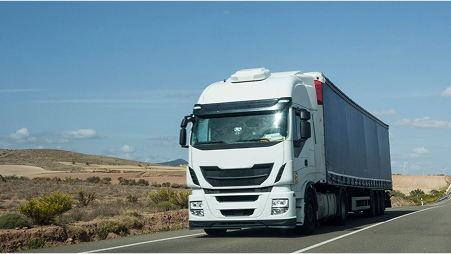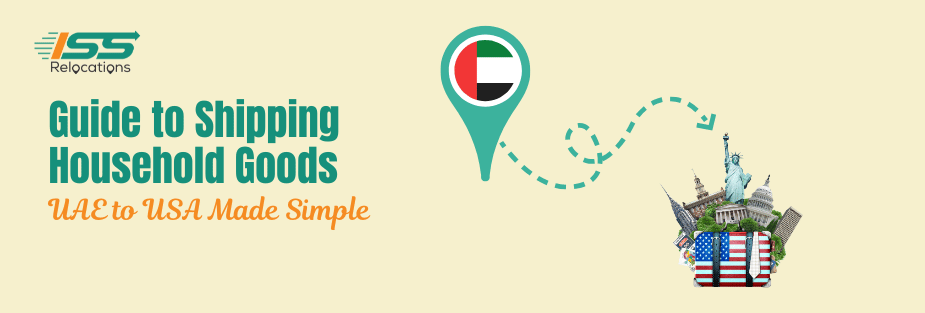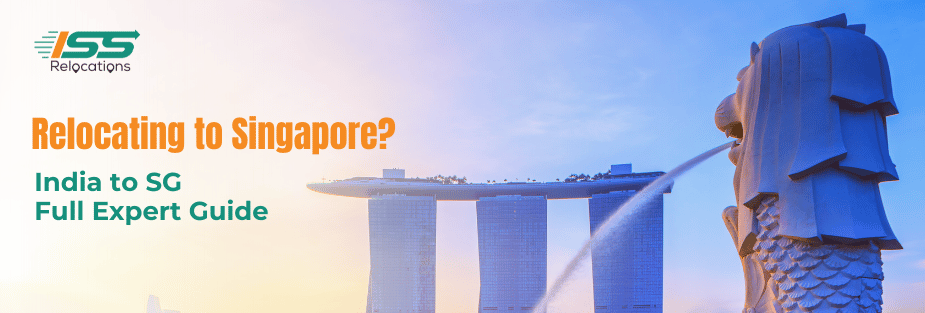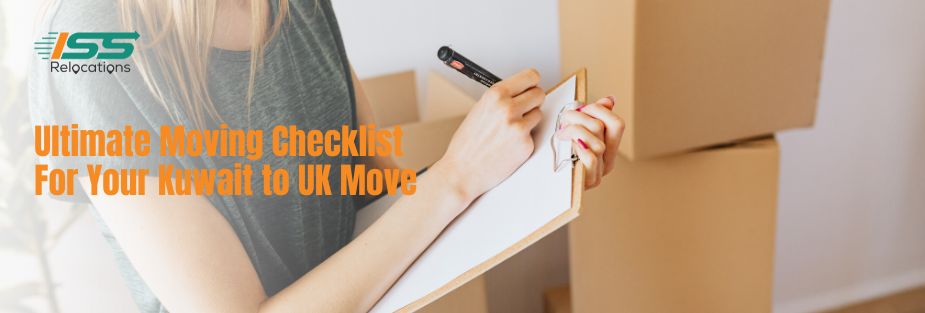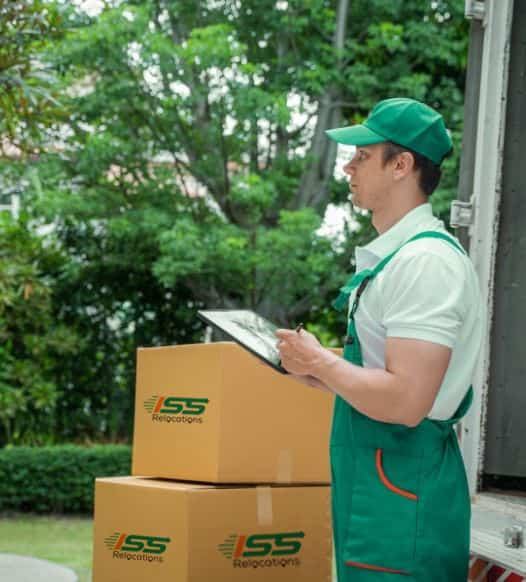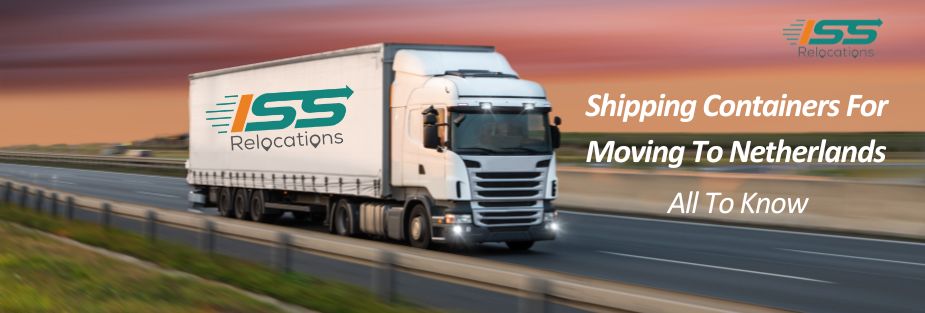
Shipping Containers for Moving to Netherlands – All to Know
Moving to a new country is an exciting adventure that requires careful planning and execution, especially when it comes to transporting your belongings. If you’re considering moving to the Netherlands, one of the most efficient and secure ways to relocate your household goods is by using a shipping container. This method not only offers considerable flexibility and space but also ensures that your possessions travel safely across seas.
In this guide, we’ll explore everything you need to know about using shipping containers for moving to the Netherlands. Whether you’re relocating for work, family, or simply seeking a change of scenery, understanding how to effectively utilize shipping containers can make your transition smoother and less stressful. We’ll cover the types of containers available, the logistics of international shipping, customs procedures, and tips for packing and preparation.
With the right knowledge and support from reliable moving services in the Netherlands, you can look forward to a seamless move. Let’s dive into the essentials of using shipping containers for your relocation to the picturesque landscapes and vibrant culture of the Netherlands.
Understanding Shipping Containers for Netherland Moves
Shipping containers are the backbone of global logistics, providing a secure and efficient way to transport a wide array of goods across oceans. When it comes to international relocations, including moving to the Netherlands, understanding the different types of shipping containers and their benefits can help you make informed decisions for your move.
Types and Sizes of Shipping Containers
- Standard Containers: Typically measuring 20 or 40 feet in length, these containers are ideal for most household moves. They offer ample space for furniture, appliances, and personal items.
- High-Cube Containers: Similar to standard containers but with an extra foot of height, high-cube containers provide that additional space which can be crucial for stacking items and fitting taller pieces.
- Specialized Containers: For items that require temperature control or extra protection, refrigerated or insulated containers might be necessary. While not commonly used for most household moves, they are available for specific needs.
Advantages of Using Shipping Containers for Moving to Netherlands
- Cost-Effectiveness: Shipping containers can be a more economical choice compared to other shipping methods, especially when considering large volumes of goods.
- Security: Containers are designed to be sealed and locked, providing excellent protection against theft and environmental factors.
- Simplicity: Using a single container for a move can simplify logistics, as all your goods can be loaded, shipped, and unloaded in one go.
- Flexibility: Containers can be shipped by sea, rail, or road, offering flexibility depending on your location and timeline.
Understanding these aspects is critical when planning your move to the Netherlands, ensuring that you choose the right type and size of container based on your specific needs. The choice of container can significantly impact not only the cost but also the ease of your relocation process. Partnering with experienced moving services in the Netherlands can also help streamline this process, providing guidance and expertise that ensure your belongings arrive safely and on time.
Planning Your Move to the Netherlands
Preparing for an international move requires thorough planning and a clear understanding of the process involved in shipping a container to the Netherlands. Here’s how to begin planning your relocation effectively:
Choosing the Right Shipping Containers
Selecting the appropriate container is crucial for ensuring the safety and efficiency of your move. Consider the following factors:
- Size of Container: Based on the volume of items you need to move, choose between a 20-foot or a 40-foot container. A 20-foot container typically holds the contents of a three-bedroom house, while a 40-foot container is ideal for larger homes or additional items such as vehicles.
- Type of Container: Decide whether a standard, high-cube, or specialized container best meets your needs, depending on the nature and size of your items.
Estimating the Volume of Goods
- Inventory List: Create a detailed list of all items you plan to ship. This helps in determining the required container size and assists in customs clearance.
- Professional Assessment: Consider consulting with a professional moving service, like ISS Relocations, who can provide an accurate estimate and advice on how to optimize your container space.
Logistics of Shipping to the Netherlands
- Booking a Shipping Agent: Partner with a reputable shipping agent who has experience in handling moves to the Netherlands. They will handle the booking of your container’s shipment, arrange for drop-off and pick-up, and provide valuable logistics support.
- Timeline Planning: Shipping by container to the Netherlands can take several weeks, depending on the origin. Plan your move with an appropriate timeline, considering possible delays in shipping and customs clearance.
Documentation and Legal Requirements
- Personal Documents: Ensure you have all necessary documents such as passports, visas, and work permits.
- Customs and Import Documents: Prepare the required customs documentation for moving your goods internationally. This includes a detailed inventory list, a value declaration of your goods, and any necessary import permits.
Proper planning not only ensures that your belongings arrive safely in the Netherlands but also helps in alleviating much of the stress associated with international relocations. By choosing the right container, accurately estimating your goods, and understanding the logistical requirements, you set the stage for a smooth transition to your new home. Additionally, leveraging the expertise of established moving services in the Netherlands can significantly enhance the efficiency and ease of your move.
Logistics of Shipping Containers to the Netherlands
Understanding the logistics of shipping containers is pivotal for a smooth relocation to the Netherlands. The journey your container takes involves several key steps and considerations, which, when planned properly, ensure that your belongings arrive safely and on time.
Route Planning
- Sea Route Selection: The choice of sea route depends on your origin point and can significantly impact transit times and costs. Most routes to the Netherlands will pass through major global shipping hubs.
- Transshipment Points: Depending on the origin, your container might be transferred between ships at intermediary ports. This is a common practice in global shipping to optimize route efficiency.
Timeframe Expectations
- Transit Times: Shipping times can vary widely based on the starting point and the specific shipping line used. For example, transit from the East Coast of the USA to the Netherlands might take approximately 10-15 days at sea, whereas shipping from Asia could take 20-30 days.
- Scheduling: It’s important to discuss scheduling with your shipping provider to align the arrival of your goods with your moving plans. This includes understanding the shipping schedule and the frequency of shipments to your destination in the Netherlands.
Handling and Tracking
- Container Handling: Once loaded, your container will be sealed and should not be opened until it reaches its final destination, ensuring the security and integrity of your belongings.
- Tracking Systems: Modern shipping services provide tracking systems that allow you to monitor the progress of your container as it moves towards the Netherlands, giving you peace of mind and the ability to plan around its arrival.
Arrival and Offloading
- Port of Entry: The Netherlands boasts several major international ports, with Rotterdam being one of the largest in Europe. Your container’s port of entry will depend on the chosen shipping route.
- Customs Clearance: Upon arrival, your container will go through customs. The process involves checking the documentation and ensuring that no prohibited items are being transported. This step can take a few days, depending on the volume of shipments being processed.
Understanding these logistics is essential for anyone moving to the Netherlands. By familiarizing yourself with the route planning, timeframe expectations, handling, tracking, and arrival processes, you can manage your expectations and prepare adequately.
Working with a reliable moving service, like ISS Relocations, can also help navigate these complexities, ensuring that every aspect of your container’s journey is handled professionally.
Needs Shipping Containers?
Begin Your Stress-Free Relocation Journey Today – Contact Us Now!
Customs and Regulations
Navigating the customs process is a crucial aspect of moving to the Netherlands using a shipping container. It’s important to understand the regulations and prepare all necessary documentation in advance to ensure a smooth transition through Dutch customs.
Customs Clearance Process
- Documentation Review: Customs officials will require a detailed inventory of all items being shipped, which should list each item along with its value. This documentation helps in assessing duties and taxes and ensures that all items are accounted for.
- Inspection: While not all containers are physically inspected, customs authorities have the right to select any container for a detailed check. This is to ensure that the contents match the inventory provided and that no prohibited items are included.
Necessary Documentation
- Bill of Lading: This is the contract between the shipper and the carrier and acts as a receipt for the goods being transported.
- Packing List: This should be detailed and itemized, showing exactly what is in the container.
- Proof of Ownership: You may need to show purchase receipts or insurance policies for valuable items.
- Import Declaration: This is a document that declares the goods being imported to the local authorities.
Duties and Taxes
- Assessment: Duties and taxes will be assessed based on the value of the items and their classification under the Harmonized System codes.
- Exemptions: There may be tax exemptions available, especially if you are relocating permanently and transferring your residence to the Netherlands.
Special Regulations
- Prohibited Items: Certain items cannot be imported into the Netherlands. These generally include weapons, drugs, certain agricultural products, and items protected by international agreements such as CITES.
- Restricted Items: Items such as alcohol, tobacco products, and new goods purchased less than six months before the move may be subject to duties and require additional documentation.
Addressing the user query, shipping containers do indeed go through customs, and the process is integral to ensuring that all imports comply with Dutch laws and regulations. Understanding and preparing for this phase of your move is vital to avoid delays and potential fines. Utilizing the services of a seasoned mover like ISS Relocations can provide invaluable assistance in navigating the complexities of customs clearance, ensuring that all your documentation is in order and that you are fully compliant with local laws.
What Can and Cannot Be Shipped
When preparing to move to the Netherlands using a shipping container, it’s crucial to know what items you can safely and legally include. Certain goods are not allowed, and failing to adhere to these regulations can result in delays, fines, or confiscation of prohibited items.
Prohibited Items
- Illegal substances: Drugs and narcotics are strictly prohibited and their inclusion can lead to severe legal consequences.
- Weapons and Ammunition: These require special permits and are generally not allowed unless prior approval is obtained.
- Endangered Species: Products made from endangered species that are protected under CITES (the Convention on International Trade in Endangered Species of Wild Fauna and Flora).
- Counterfeit Goods and Pirated Material: These are not only unethical but also illegal to import.
Restricted Items
- Plants and Plant Products: These may carry pests and diseases and are subject to strict controls or require special import permits.
- Food Products: Meat, dairy, and certain other food products have restrictions due to health and safety reasons.
- Medication: Some over-the-counter and prescription medications might be restricted; always carry a doctor’s prescription and keep medications in their original packaging.
Special Considerations
- Cultural Artifacts and Other Regulated Goods: Items with cultural significance may need special permissions to be exported from your current country and imported into the Netherlands.
Ensuring Compliance
- Check Local Regulations: Before packing, verify the latest regulations via official Dutch customs resources or consult with your moving services provider.
- Document Everything: Maintain a detailed list of all items you’re shipping, especially if they fall under restricted categories. Documentation should include descriptions, quantities, and, if applicable, relevant permits or certifications.
Adhering to these guidelines will help prevent legal issues and ensure that your belongings arrive in the Netherlands without undue delay. For additional support and expertise, consider engaging a reputable moving service like ISS Relocations, which can guide you through the intricacies of what can and cannot be included in your shipment.
Cost Considerations
Relocating to the Netherlands involves various expenses, particularly when shipping a container. Understanding these costs will help you budget effectively and find the most economical options for your move.
Factors Affecting the Cost of Shipping Containers
- Container Size and Type: Larger and specialized containers typically cost more than standard ones.
- Distance and Route: Longer shipping routes or routes with less frequent service can be more expensive.
- Seasonality: Prices may vary based on the time of year, with higher costs during peak moving seasons.
- Additional Services: Costs can increase if you require additional services like packing, loading, storage, or insurance.
Cheapest Ways to Ship a Container
Addressing the user query regarding the cheapest way to ship a container, here are some strategies to consider:
- Compare Shipping Companies: Obtain quotes from multiple carriers to find the best rates.
- Choose a Less Busy Shipping Season: Avoiding peak times can lead to lower costs.
- Opt for a Slower Shipping Service: If time is not a pressing issue, choosing a slower service can save money.
- Consolidate Shipments: If possible, share container space with others to reduce costs.
Tips for Cost-Saving
- Book Early: Secure your shipping arrangements well in advance to avoid last-minute premiums.
- Pack Efficiently: Maximize space by packing smartly, which can sometimes allow you to downsize to a smaller, less expensive container.
- Deduct Moving Expenses: Keep receipts and check if your moving expenses are tax-deductible, especially if relocating for work.
Budgeting Your International Move
- Detailed Budget Plan: Create a comprehensive budget that includes all potential costs from start to finish, including post-arrival expenses.
- Emergency Fund: Always have a contingency fund to cover unexpected costs during the move.
Proper financial planning is crucial for a stress-free relocation. By understanding the factors that affect shipping costs and exploring ways to minimize these expenses, you can manage your budget more effectively.
As container shipping regulations continue to evolve in Europe, recent calls from maritime stakeholders to the EU shed light on how competition rules could impact future shipping logistics.
Choosing the Right Moving Services
Selecting a dependable moving service is pivotal when relocating to the Netherlands. The right mover not only simplifies the process but also ensures your belongings arrive safely and on schedule. Here are key criteria to consider when choosing a moving company:
Criteria for Choosing a Moving Service
- Experience with International Moves: Look for companies that specialize in international relocations and have specific experience with moves to the Netherlands.
- Reputation and Reviews: Check online reviews and testimonials to gauge the reliability and customer satisfaction of the moving service.
- Service Offerings: Ensure the moving company offers comprehensive services that match your needs, such as packing, loading, customs clearance, and storage solutions.
- Licensing and Insurance: Verify that the company is licensed and offers insurance options to protect your belongings against loss or damage during transit.
How ISS Relocations Can Assist
- Tailored Services: ISS Relocations provides customized moving solutions designed to meet the unique needs of each client, ensuring a seamless transition to the Netherlands.
- Local Expertise: With extensive knowledge of Dutch regulations and local logistics, ISS Relocations navigates the complexities of moving to the Netherlands efficiently.
- Comprehensive Support: From packing and loading to handling all customs formalities, ISS Relocations offers end-to-end services, making your move as stress-free as possible.
Partnering with Professionals
- Coordination: Effective coordination with a moving service can significantly reduce the burden of moving logistics. ISS Relocations coordinates all aspects of your move, keeping you informed at every step.
- Customs Assistance: Navigating customs can be complex, especially with the stringent regulations in the Netherlands. ISS Relocations ensures all your paperwork is in order, minimizing delays and potential issues at customs.
Choosing the right moving service is not just about moving your belongings but also about finding a partner who understands the challenges of international relocation. With ISS Relocations, you gain a dedicated team that is committed to providing excellence and support throughout your move to the Netherlands.
Packing and Preparation Tips
Packing for an international move to the Netherlands requires meticulous planning and execution. Proper packing ensures that your belongings arrive in the same condition they left and helps streamline the unpacking process. Here are some essential tips and strategies to help you pack effectively for your move using a shipping container.
Best Practices for Packing a Shipping Container
- Start Early: Begin packing several weeks before your move. This gives you enough time to organize, pack carefully, and avoid last-minute stress.
- Quality Packing Materials: Use sturdy boxes, bubble wrap, packing peanuts, and strong packing tape. Quality materials protect your items during the long transit.
- Label Clearly: Clearly label each box with its contents and the room it belongs in. This aids in the organization both during loading and unloading.
- Load Strategically: Place heavier items at the bottom and lighter items on top. Ensure that weight is evenly distributed to prevent shifting during transport.
Maximizing Space and Protecting Belongings
- Disassemble Furniture: Take apart furniture pieces, such as beds and tables, to save space and prevent damage. Keep all screws and small parts in a labeled bag.
- Use Suitcases: Pack clothes and soft items in suitcases to save on buying extra boxes and to utilize their easy handling and mobility.
- Protect Fragile Items: Wrap dishes, glassware, and other fragile items individually and cushion them with packing material. Mark boxes as “Fragile” to ensure careful handling.
Importance of Inventory Lists and Labeling
- Detailed Inventory: Maintain a detailed list of all items packed. This not only helps in organizing but is also crucial for insurance purposes and customs clearance.
- Systematic Labeling: Label each box with a number and keep a corresponding list of the contents. This meticulous approach will be invaluable when you unpack and in the event of a claim for missing or damaged items.
Conclusion
Packing for an international move is not just about filling boxes but about preparing your belongings for a journey across borders. Following these guidelines will help ensure that every item arrives safely and is easy to locate upon arrival.
Partnering with a professional moving service like ISS Relocations can significantly ease the burden of packing for your move to the Netherlands. With expert packers who understand the nuances of international shipping, you can trust that your belongings are packed with the utmost care and professionalism. This not only secures your items during transit but also provides peace of mind that everything is prepared to meet international shipping standards.
Plan Stress-free Move with Top Moving Company in UAE - ISS Relocations

Frequently Asked Questions
How much does container shipping cost?
Container shipping costs depend on factors such as distance, container size, and services required. Typically, prices range from €2,000 to €10,000. ISS Relocations offers competitive rates and comprehensive logistics solutions, ensuring efficient and secure use of shipping containers for your move.
How much does a 40-foot container cost?
Shipping a 40-foot container can cost between €4,000 and €8,000, depending on the shipping route and additional services. ISS Relocations provides detailed cost breakdowns and reliable handling of your belongings when using shipping containers for your relocation.
What are shipping containers called?
Shipping containers are also known as intermodal containers, freight containers, or ISO containers. ISS Relocations ensures your move is handled with expertise, using high-quality shipping containers tailored to your needs.
How much is an import container?
The cost of importing a container depends on size, destination, and customs fees, typically ranging from €2,000 to €6,000. ISS Relocations manages all aspects of container shipping, including customs clearance, to streamline your relocation process.
How much does it cost to ship a container from Mumbai to Dubai?
Shipping a container from Mumbai to Dubai typically costs between $2,000 and $4,000 for a 20ft or 40ft container. ISS Relocations offers efficient and cost-effective shipping services, ensuring timely and secure transport for your goods.
What is the price difference for a 20ft and 40ft container?
A 20ft container is generally 20–30% cheaper than a 40ft container. While 20ft containers are ideal for smaller shipments, 40ft containers provide double the capacity for larger moves. ISS Relocations helps you choose the right container size based on your requirements.
How much does it cost to buy an empty 40-foot container?
The cost of purchasing an empty 40-foot container ranges from €2,500 to €5,000, depending on condition and location. ISS Relocations provides guidance on whether purchasing or renting a container is more cost-effective for your specific moving needs.
Moving Company - Recent Blog
Stay informed and prepared for your next move with our latest blogs on moving services in the UAE. From expert packing tips to international relocation guides, ISS Relocations brings you up-to-date insights to make your moving experience smoother, safer, and stress-free.
